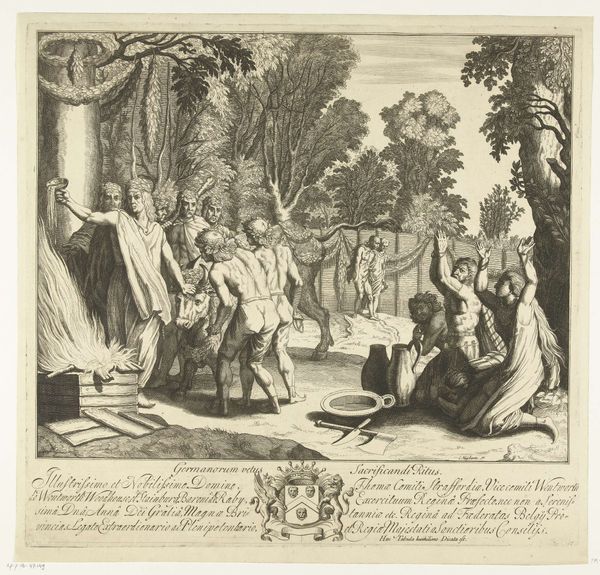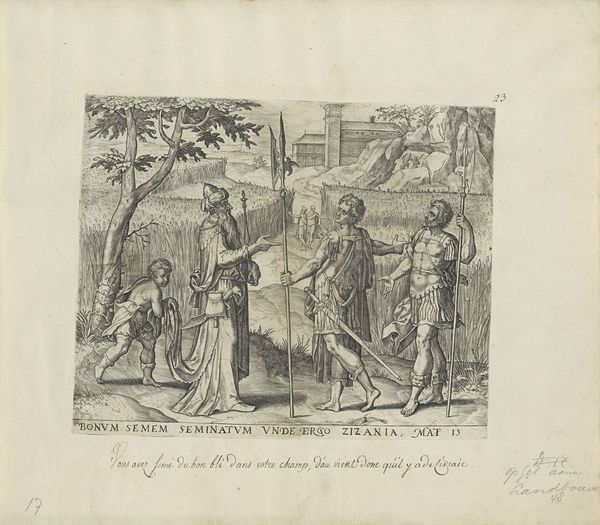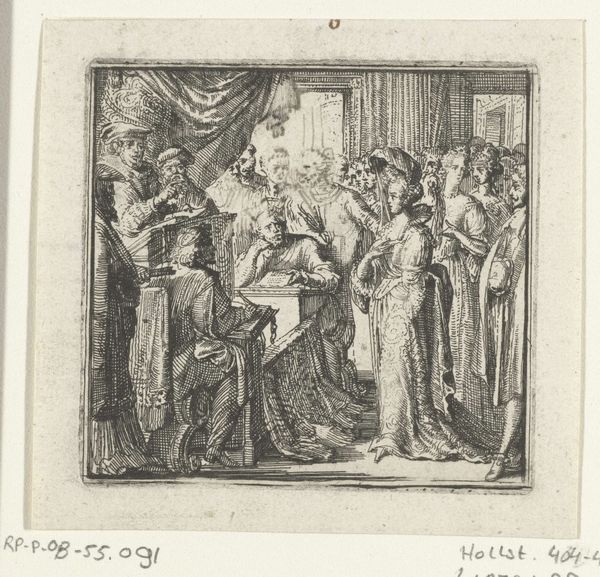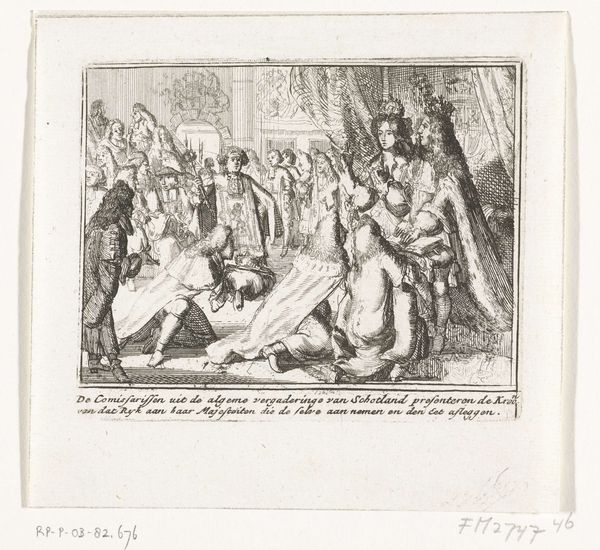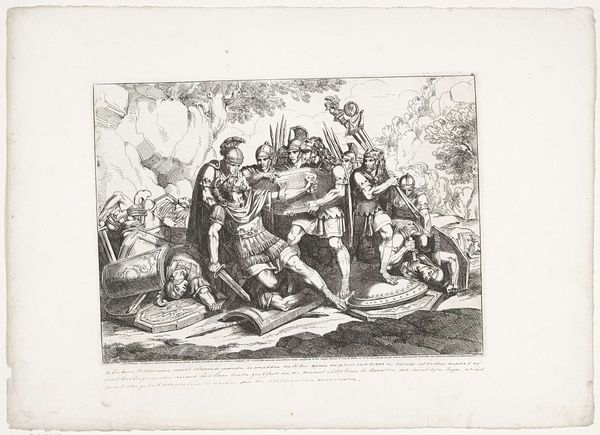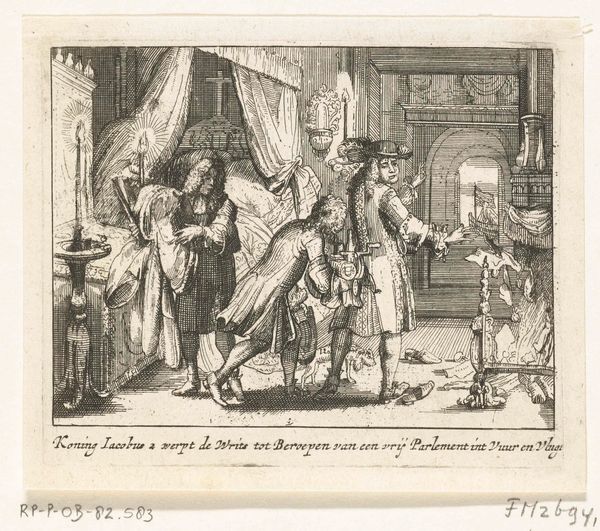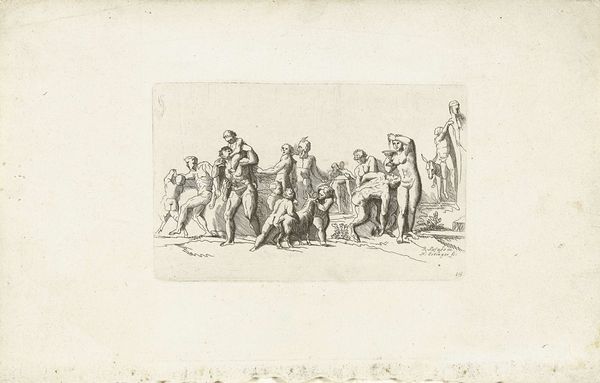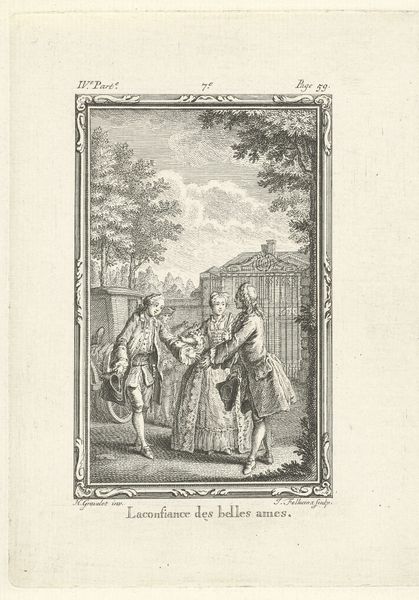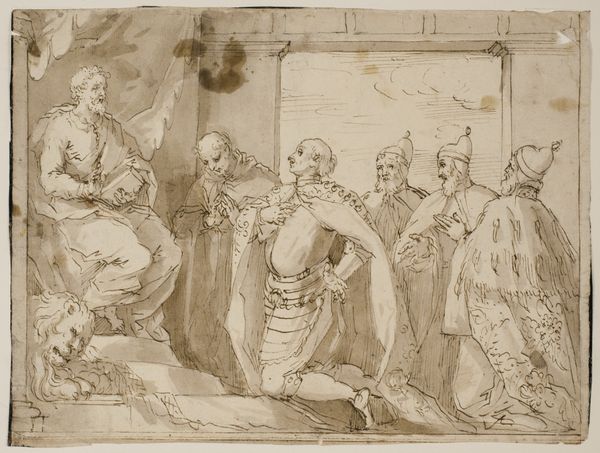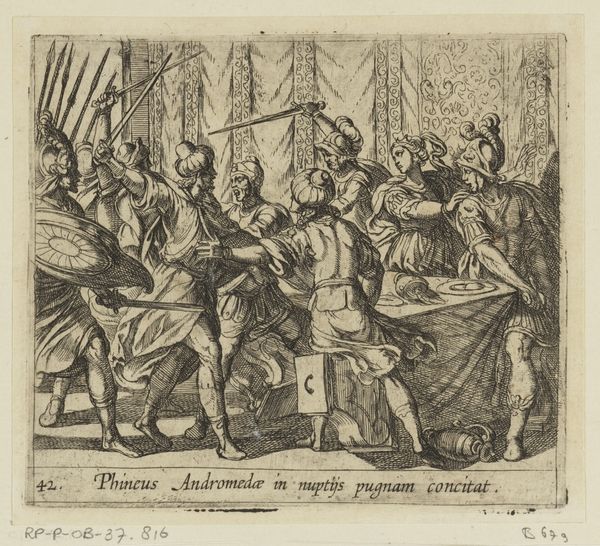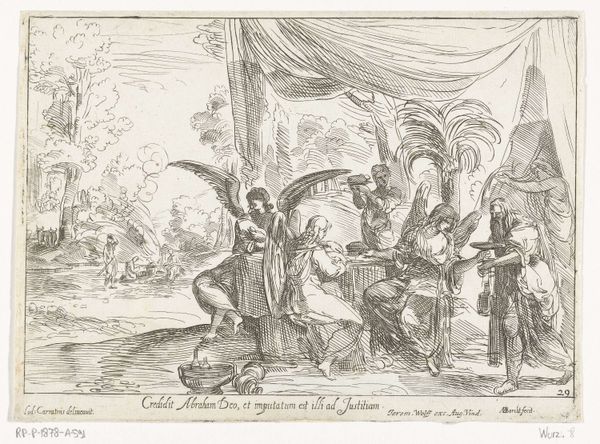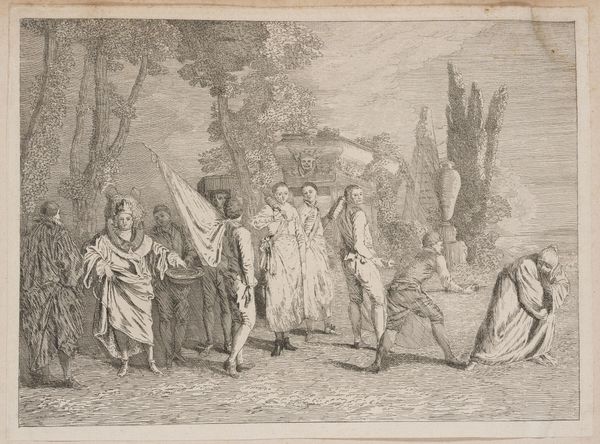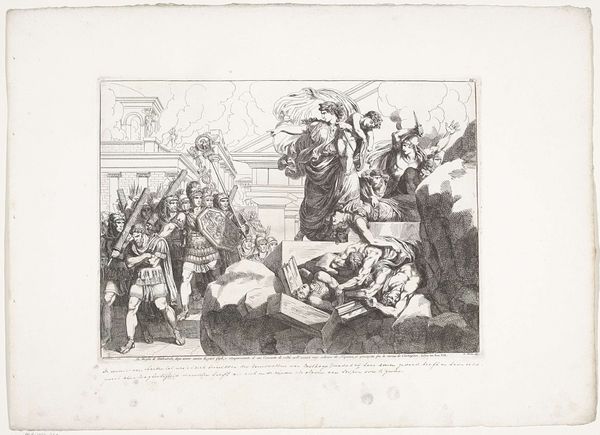
print, etching, engraving
#
narrative-art
#
baroque
# print
#
etching
#
old engraving style
#
figuration
#
history-painting
#
engraving
Dimensions: height 74 mm, width 79 mm
Copyright: Rijks Museum: Open Domain
This tiny illustration for Boccaccio’s Decamerone was made by Romeyn de Hooghe in the late 17th century, using etching – a printmaking technique that democratized image production in its day. The process involves covering a metal plate with a waxy, acid-resistant ground, then scratching off the ground with a needle to expose the metal. Immersing the plate in acid creates the image. The ink is applied and the plate is pressed onto paper. Notice the qualities that this technique enables: the crispness of the lines, which have a graphic immediacy. The material influences the aesthetic, demanding a very particular set of skills. The method’s reliance on acid to bite into the plate is also critical; it determines the depth and width of the lines, thereby controlling the print's tonal range. The print illustrates a group of upper-class figures overlooking laborers unloading a ship. Through a process of skilled, specialized labour, the artist calls attention to the class divisions of the time. The artwork reminds us that methods and materials are always tied to wider issues of labour, politics and consumption.
Comments
No comments
Be the first to comment and join the conversation on the ultimate creative platform.
